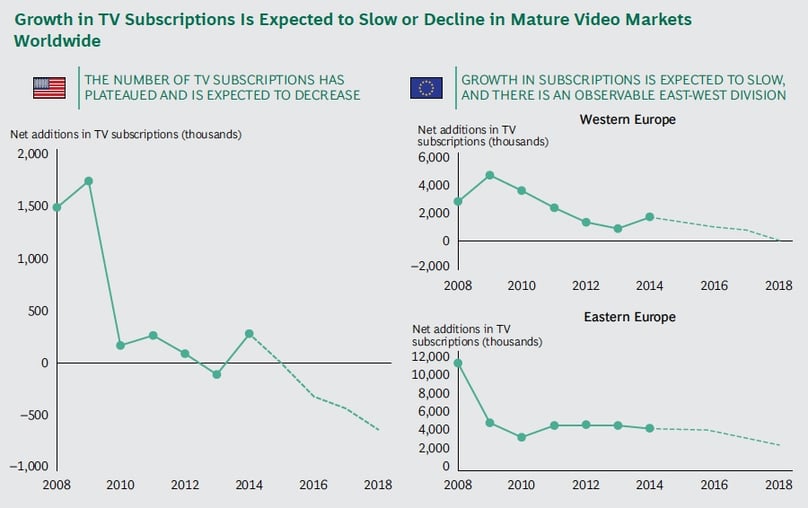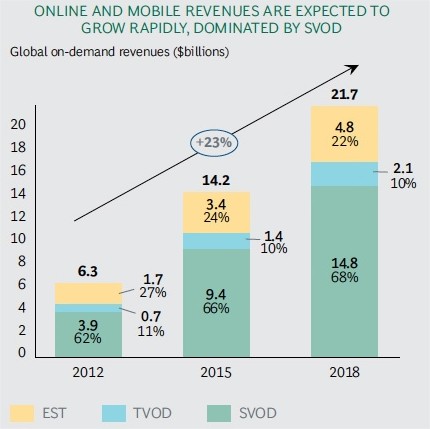These days everything is fast paced, on the move, on demand and needs to be done yesterday - and as all we know, video content consumption is no exception.
It's not a new insight (in fact, we've talked about it many times before), but traditional television is almost dead in the water. In the modern world, almost everything lives on the World Wide Web - but, who will dominate this new era of online television?
In short, the answer is the SVOD providers and the tech companies that support them.
Which companies drive the online TV trend?
Recently, Hulu announced that they will be launching a live TV streaming package expected to include the likes of Fox, ABC, and ESPN, thus bringing the pursuit of watching live TV online from niche to mainstream. In addition to this, YouTube is also aiming to release its own brand of live television streaming to the masses, offering 'skinny bundles' that are less pricey than traditional cable packages.
Of course, for fans of regular (soon to be considered old school) television, this shift in content viewing medium will mean that negotiation standoffs between pay-TV operators and networks will ultimately drive up the cost of cable and satellite packages - meaning even less value for money. It may also mean that smaller cable channels may feel the squeeze due to a slower transition to online TV formats.
According to Time's editor, Victor Luckerson, tech-savvy consumers will benefit greatly from this new era of SVOD television dominance as they will be able to pick and choose the providers/services they use, meaning more choice, autonomy, and real value for money.
Tech companies and major television networks will also find themselves flourishing by getting behind the online TV era - and with such a broad scope in terms of content, target audience, and fresh revenue opportunities, it's easy to understand why.
TV vs SVOD: What does stats show?
The old television box of yesteryear may be on its way out, but it has paved the way for what's happening today, and since the 1950's, its development from the three channel black and white box to the HD ready entertainment hub it is today is quite astounding.
According to research recently carried out by The Boston Consulting Group (BCG), the number of TV subscriptions is slowing in most markets and is projected to decline sharply in the US. Here is a greater insight into the growth of subscribers according to region:
Between 2013 and 2014, streaming consumption rose by a rather astonishing 50%, and it shows no signs of slowing down. The same research also considers changes in the revenue structure of the different online business models available out there.
While EST or AVOD (free access to video content, supported by revenues from ads) is projected to grow from $1.7 billion in 2012 to $4.8 billion by 2018, TVOD (transaction-based video on demand) and SVOD (subscription-based video on-demand) in larger extent will drive revenue growth for video distributors. TVOD should take around 10% of the total online and mobile revenues of $21.7 billion and SVOD will surge rapidly, increasing its market share from 62% in 2012 to 68% by 2018 – thus increasing revenues to $14.8 billion.
So, it seems like a revolution is at foot and it may mean the demise of traditional TV as we know it, with a mass migration to online television looking inevitable. It's an exciting time for SVOD video content - and whether you're a savvy consumer, a tech company, a broadcaster or a provider, the possibilities seem almost infinite.
Interested in launching your own SVOD service? Check out what are the biggest advantages of SVOD over the other revenue models:






